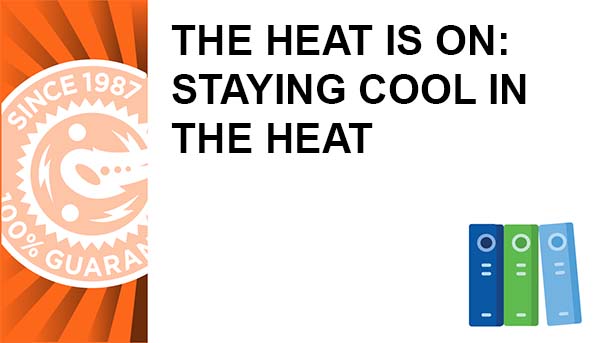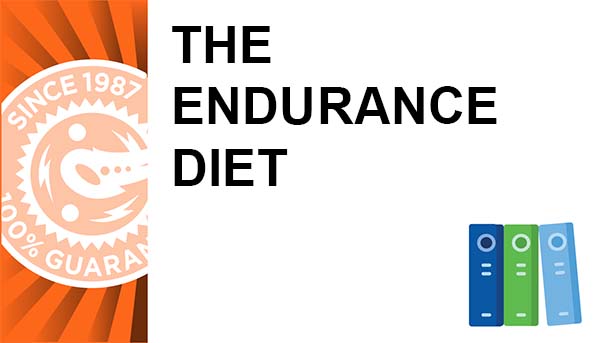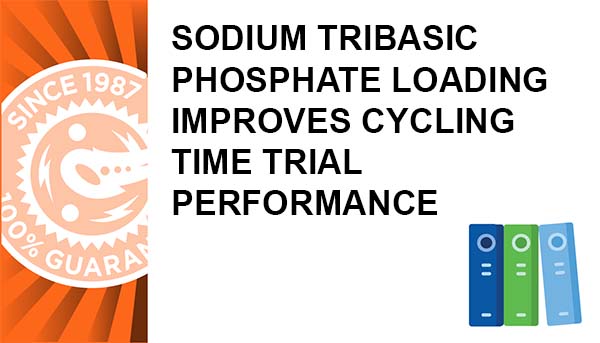By William Misner Ph.D.
Sodium makes up about 2.6% by weight of the Earth's crust making it the fourth most abundant element overall and the most abundant alkali metal. Sodium normally comprises 0.15% of body weight or a total of 95 grams of Sodium (mainly from Sodium Chloride). Sodium is necessary for regulation of blood and body fluids, transmission of nerve impulses, heart activity, and certain metabolic functions. Table salt is 39% sodium and 60% chloride molecules. Sodium is required for life, but over-consumption can increase the risk of health problems, including high blood pressure, in those individuals who are genetically predisposed to hypertension. Sodium is one of the primary electrolytes in the body. Too much or too little salt in the diet can lead to an electrolyte disturbance, which can cause severe, even fatal, neurological problems. Too little sodium or diluting blood serum sodium is a life-threatening emergency, while chronic overdose above 2300 milligrams per day may increase blood pressure. Elevated blood pressure is regarded as one of the characteristics of progressive cardiovascular disease. Thus, too little sodium or too much sodium are mutually harmful to both heart health/efficiency and endurance performance [1-7]. A sedentary adult can reproduce normal sodium serum levels consuming between minimal doses required to maintain health in a sedentary subject is 200-500 mg per day. Consumption of 12,000 mg (12 grams) or more of sodium per day is regarded as toxic. The average western diet contains 2.3-20 grams of Sodium per day. In 70 diets computer-analyzed from actual food-intake lists of athletes and non-athletes 1996-2006, endurance athlete consumed between 6000-8000 mg sodium per day. However, aerobic exercise in the heat may spend whopping 2000 milligrams sodium per hour during evaporative cooling from profuse sweating. It is hypothesized that it is the rapid changes in serum sodium levels, which the body is not adapted, (sodium losses more than sudden increase), that produce serious performance-inhibiting consequences. The athlete who is unconditioned and not acclimatized to high fluid & electrolyte losses will predictably suffer performance deterioration due to a low serum sodium or hyponatremic event. Research reports fit-acclimatized athletes need only 50% of the sodium required to maintain serum sodium levels as do unfit-unacclimatized subjects [8-9]. The more fit and the more trained & heat-exposed, the less sodium is required.
There are, however, other factors that may influence sodium requirements between subjects, further explaining why one person may require 1-3 Endurolytes/hour while another requires 6 per hour. Research implies that dietary sodium overdose may increase the risk of widening individual variations. A study of 1500 subjects reported that those who eat the most salt tend to have the highest blood pressure. The higher the blood pressure, the harder the heart works to sustain blood flow. The harder the heart works; the sooner onset of fatigue is generated. This study that reported an association between salt overdose and elevated blood pressure selectively involved men and women aged 16-64. They found that as daily salt intakes rose from 1600 mg/day to 9200 mg/day, so did blood pressure. A rise in salt consumption from 2300 mg/day to 4600 mg/day led to a whopping 7.1 mmHg rise in systolic blood pressure for women and a 4.9 mmHg rise for men [10]! Dietary sodium over- or under- dose may also explain why more individuals have problems the longer the event. A study was performed on 36 athletes during a three- to four- hour triathlon and 64 athletes at an ironman race, which lasts between nine and 15 hours. No athletes were sodium deficient after the shorter race, but 27% were sodium deficient (hyponatremic) following the ironman heat. An average of 17% of the ironman participants required medical attention, most for hyponatremia (low or diluted serum sodium) (11).
HOW THE BODY CONTROL SERUM SODIUM
Aldosterone is a hormone that controls the rate of sodium circulated in the human body. Aldosterone is synthesized by the adrenal cortex. When sodium levels dip too low, aldosterone is released stimulating the kidney tubule cells to increase re-absorption of sodium back into the blood. Normal serum or plasma levels of aldosterone are dependent on the sodium intake and whether the patient is upright or supine. For males 6-22 ng/dl is normal, while 4-31 ng/dl is normal for females. High sodium intake will suppress serum aldosterone, whereas low sodium intake will elevate serum aldosterone. The reference intervals for serum (plasma) aldosterone are based on normal sodium intake. High aldosterone levels occur in response to stress, renal dysfunction, adrenal cortical over-use, or pregnancy. If aldosterone is excessive serum and tissue levels of sodium will be excessive.
CHARACTERISTICS OF REDUCED PERFORMANCE ASSOCIATED WITH SODIUM, FLUID, & CALORIE IMBALANCE
Of the endurance athletes reporting symptoms of severe sodium imbalance (between 1996-2006) following an endurance event, the following individual characteristics were observed:
- Consumed from diet above 6000 mg sodium per day.
- Consumed above 30 fluid ounces per hour.
- Consumed above 300 calories per hour.
- Did not train in the same heat or humidity as the event.
- Did not train above 60% of the event distance in hyperthermic conditions.
CHARACTERISTICS OF RESOLUTION OF SYMPTOMS ASSOCIATED WITH SODIUM, FLUID, & CALORIE IMBALANCE
In 100% of those who reported resolution of performance-inhibiting symptoms, the following individual characteristics were observed:
- Increased electrolyte intake from Endurolytes between 3-6/hour.
- Consumed between 24-28 fluid ounces per hour.
- Consumed 250-280 calories per hour.
- Trained 2-3 weeks in the same heat or humidity as the event.
HIGH SODIUM HEALTH CONSEQUENCES
Limiting sodium is recommended since research supports that chronic consumption of more than 2300 milligrams per day may contribute to Congestive Heart Failure (CHF), Hypertension, Muscle Stiffness, Edema, Irritability, Osteoarthritis, Osteoporosis, Pre-Menstrual Syndrome (PMS), Liver disorders, Ulcers, and Cataracts. The American Heart Association (AHA) says that healthy American adults should eat no more than 2,300 milligrams of sodium a day. This is about 1 teaspoon of sodium chloride (salt).
To illustrate, the following are sources of sodium in the diet.
| MEASURE | AMOUNT |
| 1/4 teaspoon salt | 575 mg sodium |
| 1/2 teaspoon salt | 1,150 mg sodium |
| 3/4 teaspoon salt | 1,725 mg sodium |
| 1 teaspoon salt | 2,300 mg sodium |
| 1 teaspoon baking soda | 1000 mg sodium |
WHAT HIGH-SODIUM FOODS SHOULD BE LIMITED?
The following foods are high in sodium and should be limited in the diet: Meat, Poultry, Fish And Other Meat Substitutes, Luncheon & Cured Meats, Processed Turkey/Chicken, Ham, Bologna, Salami, Bacon, Canadian Bacon, Corned Beef, Pastrami, Liverwurst, Frankfurters, Sausages, Dried Meat, Dried Fish, most Dairy, Processed Grains, Cereals, Soups, Snack Foods, Processed Vegetables, Spices, Condiments, Sauces, Food Additives, all Canned Meats. It is Prostaglandin E2 overproduction from eating too much salted animal meat that induces the kidneys to retain excessive quantities of sodium. Other dietary manipulations to lower sodium are respectfully listed on the PAMF website. (13)
CONCLUSION
Evidence supports limiting sodium intake during rest and exercise. The harmful effect of more chronic sodium over-dose above the bodys daily need is a real and present danger to compromise optimal health. Tight chemical messengers and hormones help the body to spare serum sodium loss. It only takes a few hundred milligrams every 15-20 minutes in the hottest environment to sustain aerobic pace. This assumes that fluid intake does not exceed 30-fluid ounces per hour or that calorie consumption exceeds 300-calories per hour.
References
1. American Heart Association Consumer Publications http://www.americanheart.org/presenter.jhtml?identifier=3040184
2. Dietary Guidelines for Healthy Children http://www.americanheart.org/presenter.jhtml?identifier=4575
3. High Blood Pressure
http://www.americanheart.org/presenter.jhtml?identifier=4623
4. High Blood Pressure, Factors That Contribute To http://www.americanheart.org/presenter.jhtml?identifier=4650
5. High Blood Pressure, What Can Be Done http://www.americanheart.org/presenter.jhtml?identifier=4630
6. Risk Factors and Coronary Heart Disease http://www.americanheart.org/presenter.jhtml?identifier=4726
7. Sodium Guidelines Set by the FDA http://www.americanheart.org/presenter.jhtml?identifier=4718
8. Shepherd, R.J., Kavanagh, T., Fluid and Mineral Needs of Middle Aged and Post Coronary Distance Runners. The Physician And Sports Medicine. May,1978: 90-102.
9. Verde, T., et al.,Sweat Composition in Exercise and Heat. J Appl Phys.1982; 53(6): 1541-1543.
10. In Arch Intern Med 1997; 157:234-238.
11. Hiller WD et al., Medical and physiological considerations in triathlons. Am J Sports Med. 2:164-167, 1987.
12. AHA Sodium Recommendation http://www.americanheart.org/presenter.jhtml?identifier=4708
13. Palo Alto Medical Foundation
http://www.pamf.org/heartfailure/lifestyle/diet/foods.html








